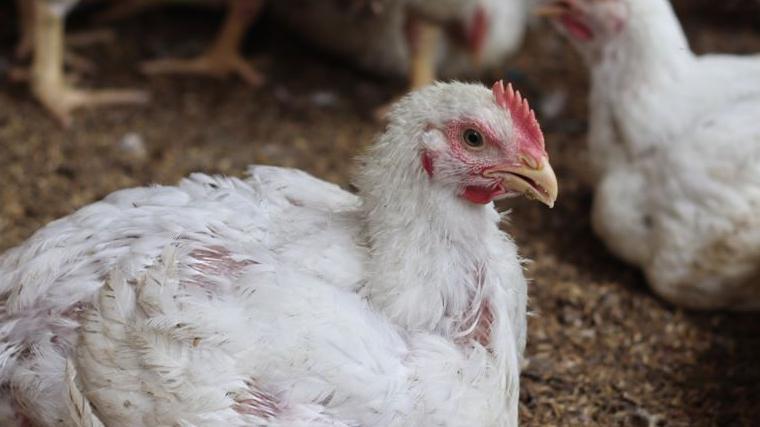Bird flu detected in swans at five locations across NI

The bird flu detected in the swans follows confirmed cases in kept birds in NI
- Published
Bird flu has been detected in swans at five locations in Northern Ireland.
The discoveries in Belfast, Newtownards, Armagh, Newry and Dungannon follow four confirmed cases in kept birds across Northern Ireland.
Earlier this month, a mandatory housing order for flock keepers was announced following reports of suspected cases of bird flu.
A spokesperson for the Department of Agriculture, Environment and Rural Affairs (Daera) said that Highly Pathogenic Avian Influenza (HPAI) had been detected in the swans.
Daera collects dead wild birds for surveillance purposes to help understand if, and when the virus is present in Northern Ireland and how it is distributed geographically.
Daera explained that once HPAI has been detected in a specific area, further testing is not required and therefore, not all birds will be collected.
"Reports will be assessed and a decision made on whether to collect and sample the carcase," they said.
The department advised that if you find dead wild birds, then you can report them to Daera via their website, external.
Public health guidance
The Public Health Agency (PHA), advises that human infections with HPAI are rare and the risk to the health of the public is very low.
The current PHA guidelines are:
Do not pick up or touch sick, dying or dead poultry or wild birds, and keep pets away from them.
Avoid contact with surfaces contaminated with bird faeces.
Avoid untreated bird feathers (such as those found in the environment) and other bird waste.
Maintain good personal hygiene with regular hand washing with soap and use of alcohol-based hand rubs.
The Food Standards Agency advises that bird flu poses a very low food safety risk for UK consumers, and that properly cooked poultry and poultry products, including eggs, are safe to eat.
What is bird flu?
Bird flu is a disease caused by a virus that infects birds and sometimes other animals, such as foxes, seals and otters.
The major strain - circulating among wild birds worldwide - is a type of the virus known as H5N1. It emerged in China in the late 1990s.
Bird migration has led to outbreaks in domestic and wild birds. The virus has in very rare cases infected humans.
Scientists say the current risk to humans is low. Transmission from birds to humans is rare and there has been no sustained human-to-human transmission.
There is no way to predict whether avian flu will trigger a pandemic in humans, but experts are monitoring its spread and studying how it is changing and evolving.
- Published10 November

- Published6 November
